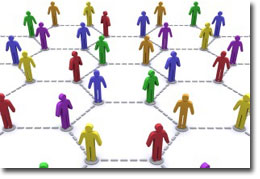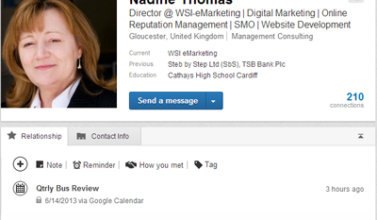
Customer success marketing is often referred to as customer marketing, retention marketing or advocate marketing. It’s ultimately the combination of several departments within the business working together to achieve a common goal. The teams involved in this strategy include the product, marketing and customer success teams.
Marketers are encouraged to use technology and marketing budgets to deliver a pleasant, memorable customer experience from the first interaction and beyond. It’s essential that marketing and customer success teams work in harmony to increase brand awareness and build brand advocates.
Many marketers believe they will be responsible for the entire customer journey by 2020. The question one should ask then, is how do businesses align customer success and marketing for optimal results?
Customer Success Marketing In Business
The important first step is to define the customer experience (journey) for your business. Keep in mind that it involves every touch point or interaction people have with your brand. It also includes the customer’s perception or how they feel about your brand.
Customer success (CS) teams traditionally take the lead on customer interactions especially post-sale. They seem to have the knowledge and ability to focus on specific areas within the customer journey. As a result of the extensive customer interactions, the CS team knows how, and when, to ask a customer to be part of a case study, write an online review or to become a sales reference.
In truth, neither marketing nor customer success can do this alone, at least not in the modern day business world. Success stems from unity and a combined effort to fully understand the customer journey, company goals and aligned strategies. Customer success teams offer intimate knowledge and the all-important human touch that makes creating brand advocates possible. Marketing should own advocacy by working hand-in-hand with customer success. This way they will understand the ever-changing needs of customers and find ways to nurture valuable relationships.
Focusing on customer advocacy improves retention, loyalty and cross- or up-sell opportunities among existing customers. It can also generate valuable social proof from customers with online reviews, referrals or testimonials. These drive demand generation much more effectively than traditional marketing tactics.
Building Brand Advocates With Customer Success Marketing
Brand awareness is possibly first on everyone’s list as it includes nurturing and qualifying customers you think you could help. This is why defining a customer journey is vital as it determines how and why a customer is a good fit. It’s not just for the benefit of your business but also that of the customer.
Regardless of business type or the product or service you’re offering, identifying your buyer personas is critical. You should always refer to your buyer personas when creating new content and it is the first step in laying a solid foundation for customer success. A common deciding factor among most customers is relevant content on a vendor’s website that speaks directly to them.
Marketers and customer success teams need to combine well to create messages and customer experiences that resonate with their target audience. Successfully aligning these two teams will achieve exceptional results when building brand advocates or ambassadors.
Using Customer Success Stories
Using customer success stories is one way of building brand ambassadors but it has to relate to personal and business value. It should always showcase the problem your customer solved using your product or service. A few prominent examples include case studies, Q&A interviews, short success stories and videos are incredibly powerful.
Organising Customer-focused Events
Another way to gain trust, authority and build brand ambassadors is through customer-focused events. These events are very effective in bringing together customers and prospects where they can discuss and share best practices and advice. A few examples include ‘MeetUps’, conferences, exhibitions and in some cases, live product launches or reviews.
Your events should always focus on content and value, not just sales or business expansion. If you’ve done your homework and the event offers great content and undeniable value, sales will follow.
Dedicated Marketing Resources
Too often brands focus on nothing else other than customer acquisition. The goal of a dedicated marketing resource for customer success is to help brands refocus their messages and experiences to provide value during the entire customer journey, not just the acquisition stage. Customer success marketing helps maintain a consistent experience throughout the customer journey.
The above-mentioned events and customer success stories are examples of dedicated marketing resources. Others include Surveys and Net Promoter Scores (NPS), after-sales communication plans, a product communication strategy in terms of product updates and measuring and optimising the post sales customer journey.
Most first impressions today are formed online through a company website, an email or social media. Align your company’s message, brand identity and content and ensure they work in harmony. If not, an inconsistent or frustrating customer experience will likely end the buyer’s journey before it even begins.
Get in touch if you would like to review the effectiveness of your digital marketing strategy in terms of customer journey, personas and social media management. We’d love to hear from you in the comments section below or find us on Facebook, Twitter and LinkedIn.
Related Post
Content Sharing Via Social...
Target marketing to meet your business goals Is your business using social media channels...
- June 15, 2011
- By Nadine Thomas
- Digital Marketing
Can you get help to fund your...
If you need a new website, it’s possible that you could get help towards the cost....
- May 30, 2013
- By Rob Thomas
- Digital Marketing
10 Best Ways to take...
Others may have seen a pop-up ‘invitation to upgrade’ message when they accessed...
- June 1, 2013
- By Rob Thomas
- Digital Marketing
3 top tips to maximise online...
Be it a business or an individual, the dramatic developments of social media have not...
- June 19, 2013
- By Rob Thomas
- Events
Google Hangouts – 6 Ways...
Google+ was launched just 2 years ago in June 2011. In the first 6 months of its...
- June 24, 2013
- By Nadine Thomas
- Digital Marketing
6 top tips on how to get the...
In Europe alone there are 243.2 million Facebook subscribers (internetworldstats, 2012)....
- July 3, 2013
- By Nadine Thomas
- Digital Marketing











Leave a Comments